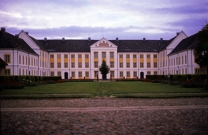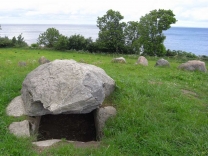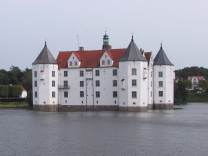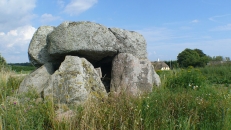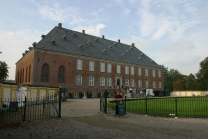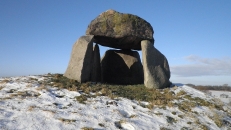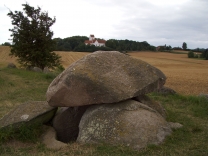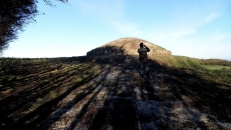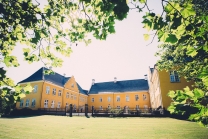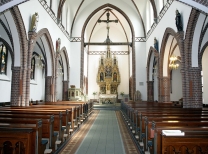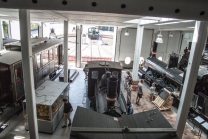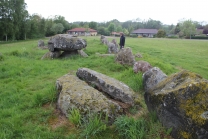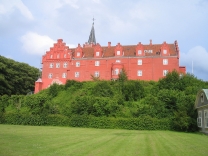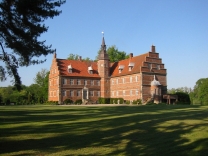Sønderborg Castle
No video yet

Sønderborg Castle
Sønderborg Castle (Danish: Sønderborg Slot) is located in the town of Sønderborg, Denmark on the island of Als in South Jutland. It houses a museum focusing on the history and culture of the area. The castle is located in the middle of the town, in a park setting overlooking Als Fjord. The museum is open year-round.
History
Sønderborg Castle began probably as a fortified tower constructed by Valdemar the Great in 1158, built on an islet in Als Strait (Als Sund) that later was connected to the island of Als. The castle was built to provide protection against attacks by the Wends and was part of a larger system of fortifications. Over the centuries, the castle has gradually been enlarged and rebuilt.
In the years following construction of Valdemar's fortified tower, an important struggle developed between the Danish king and the duke of Schloneswig over ownership of the island of Als and the town of Sønderborg. Ownership of the castle changed hands many times.
A peak in the history of the castle was the wedding of Valdemar IV of Denmark (Valdemar Atterdag) (ca. 1320-1375) to Helvig of Schleswig, the sister of Valdemar V, Duke of Schleswig.
Around 1350, the castle was expanded significantly by the addition of both the Blue Tower (Blåtårn) and huge outer walls. In 1490, the fortress became the property of the Danish crown. Both King Hans and his son Christian II extended Sønderborg Castle and made it into one of the country's strongest fortresses.
In 1532, Christian II was lured into an ambush and taken to Sønderborg Castle, where he was held as a prisoner of state for seventeen years. Legend tells that the dethroned king was confined to the Blue Tower, but in reality he lived in comparatively lavish circumstances and probably was allowed freedom of movement within the outer walls, if sometimes under closely guarded conditions. The former king sometimes even joined the noble hunts at Als. The false story about the restless king walking around a round table making a groove in it with his thumb was fabricated long afterward, during the seventeenth century.
Christian...






